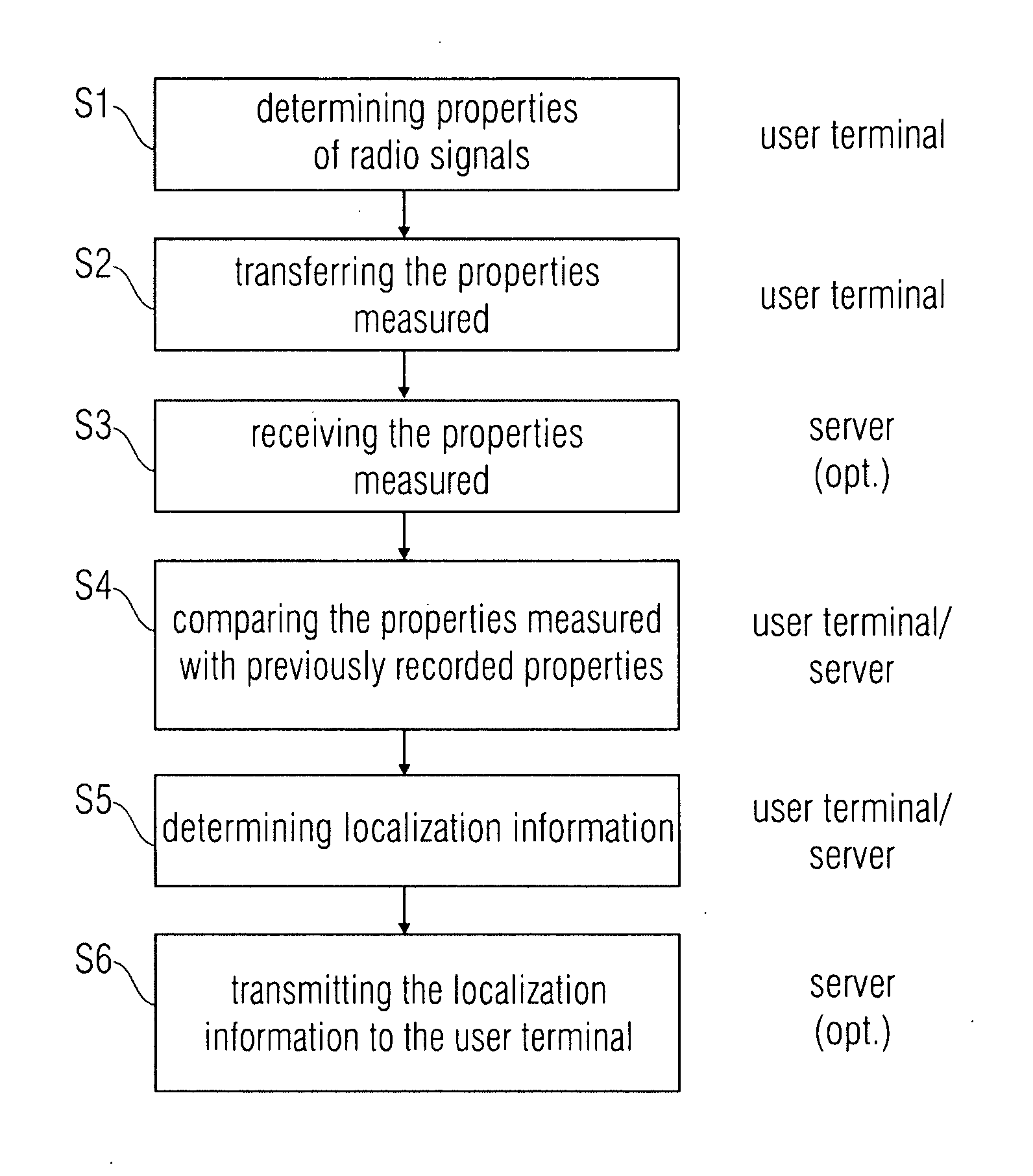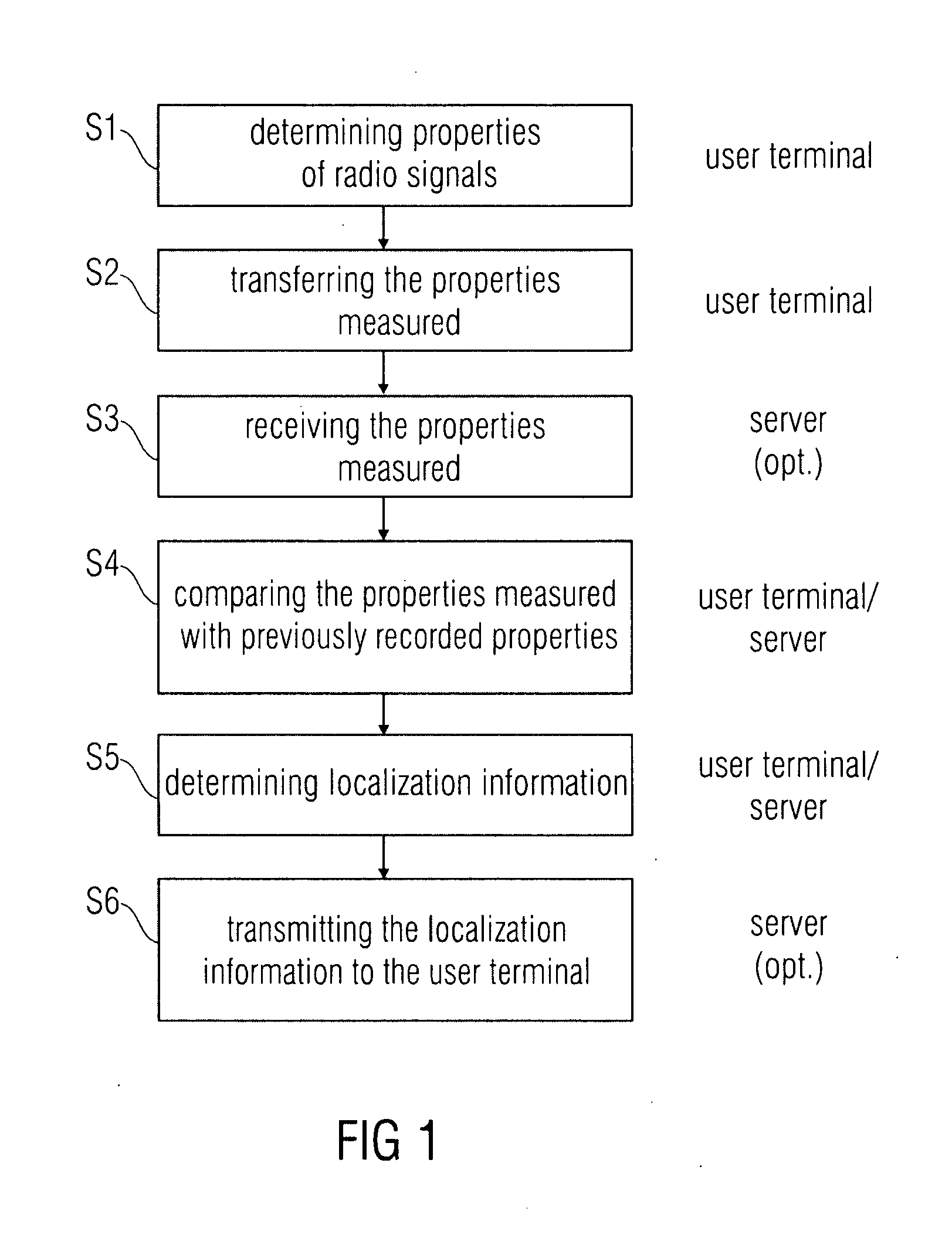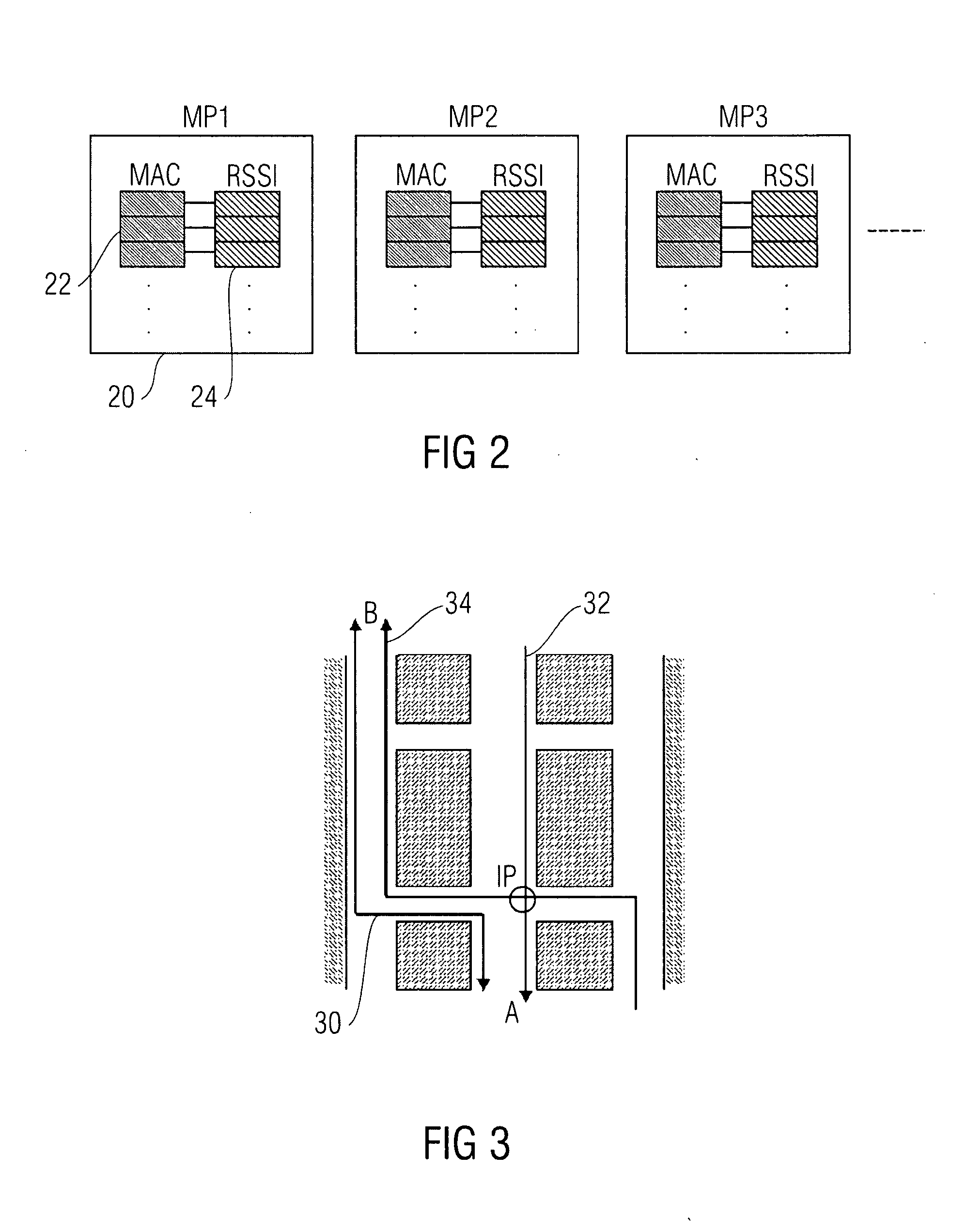Concept for localizing a position on a path
a technology of path and concept, applied in direction finders using radio waves, navigation instruments, instruments, etc., can solve the problems of inability to achieve the desired average accuracy, etc., to achieve the effect of minimal computational requirements, easy understanding, and little technical experien
- Summary
- Abstract
- Description
- Claims
- Application Information
AI Technical Summary
Benefits of technology
Problems solved by technology
Method used
Image
Examples
Embodiment Construction
[0055]With regard to the following description, it should be noted that like or seemingly like functional elements have the same reference numerals in the different embodiments and that thus the descriptions of these functional elements are mutually interchangeable in the different embodiments illustrated in the following.
[0056]In the following, with reference to FIGS. 1 to 24, the inventive concept for localizing a position on a trail is described, wherein radio signals from fixedly positioned radio transmitters may be received along the path. In this respect, FIG. 1 first of all shows a flowchart for illustrating a method for localizing a position on a trail according to an embodiment of the present invention.
[0057]The method for localizing illustrated in FIG. 1 comprises a first step S1 of determining properties of the radio signals of the fixedly positioned radio transmitters at the position of the mobile device or client, respectively. Thereupon, according to embodiments, a sec...
PUM
 Login to View More
Login to View More Abstract
Description
Claims
Application Information
 Login to View More
Login to View More - R&D
- Intellectual Property
- Life Sciences
- Materials
- Tech Scout
- Unparalleled Data Quality
- Higher Quality Content
- 60% Fewer Hallucinations
Browse by: Latest US Patents, China's latest patents, Technical Efficacy Thesaurus, Application Domain, Technology Topic, Popular Technical Reports.
© 2025 PatSnap. All rights reserved.Legal|Privacy policy|Modern Slavery Act Transparency Statement|Sitemap|About US| Contact US: help@patsnap.com



